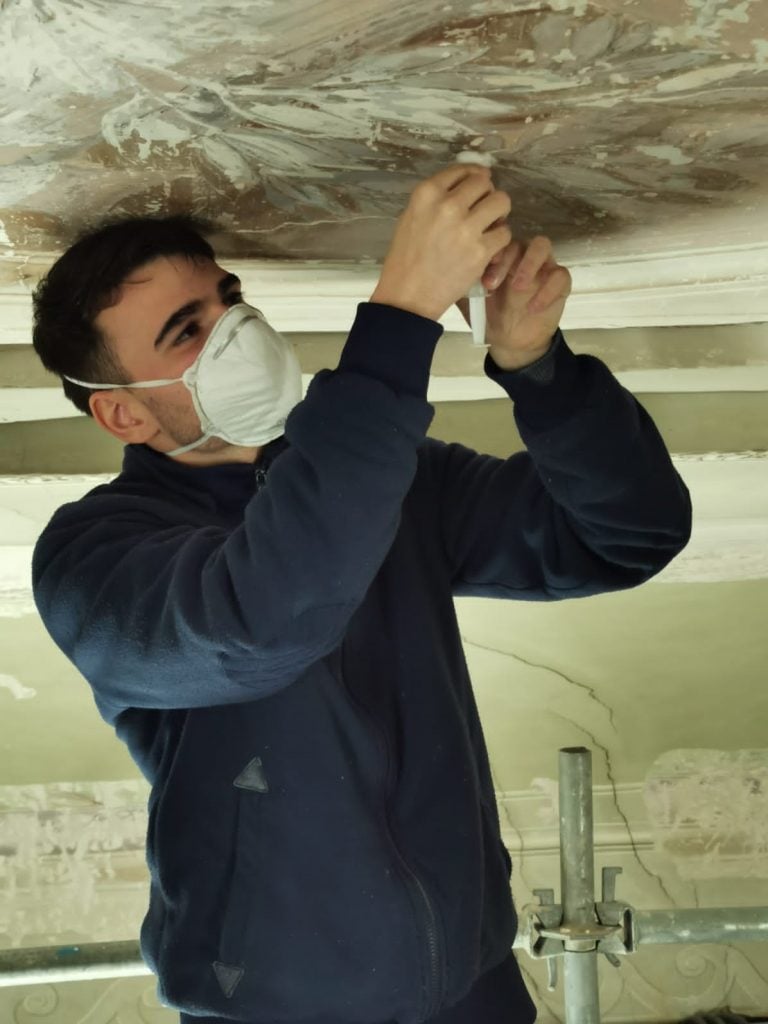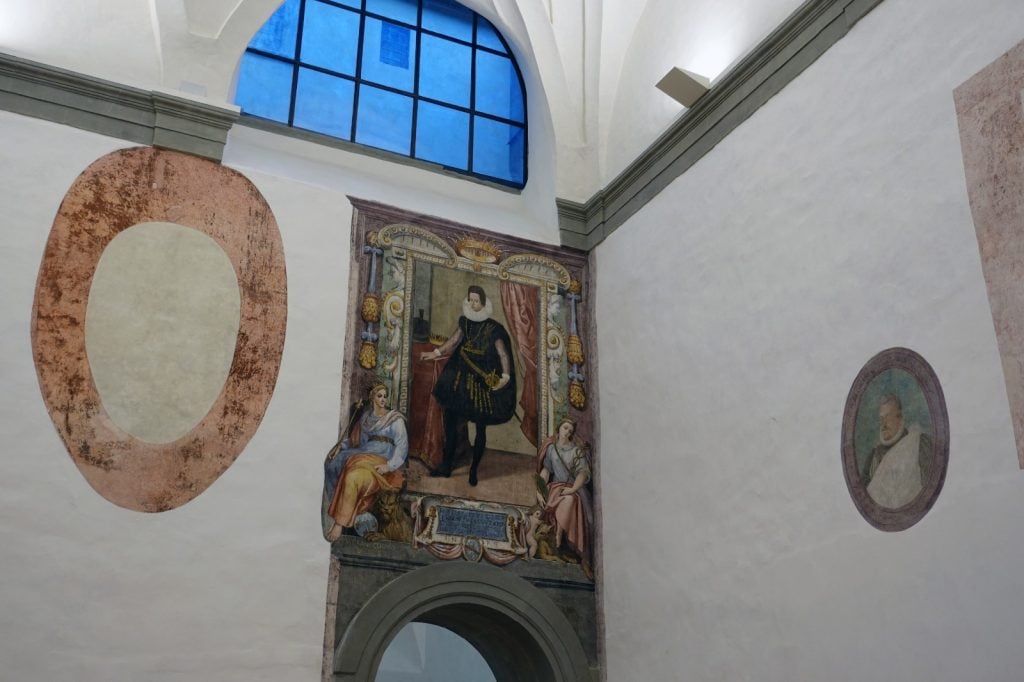Art World
A Construction Crew Working at the Uffizi in Florence Accidentally Uncovered Two Long-Lost Renaissance-Era Frescoes
The hidden gems, which depict Ferdinando I and Cosimo II de Medici, were discovered during an expansion project.

The hidden gems, which depict Ferdinando I and Cosimo II de Medici, were discovered during an expansion project.

Workers renovating the Uffizi Galleries in Florence have discovered two centuries-old hidden frescoes while expanding the museum’s galleries.
The hidden gems, which depict former Grand Dukes Ferdinando I and Cosimo II de Medici as a young man, were uncovered in the museum’s west wing.
The portrait of Cosimo II, which is full length and the older of the two artworks, had been plastered over, and the museum said it can be attributed to the circle of Mannerist painter Bernardino Poccetti.

The newly discovered frescoes at the Uffizi Galleries. Photo courtesy Uffizi Galleries.
“We had absolutely no idea [they were there]. That was total surprise,” a spokesperson for the Uffizi Galleries told Artnet News.
According to the museum, an unknown person “protected” the Cosimo II artwork before it was plastered over. “Maybe this unknown savior wanted it to be preserved for the future generations,” the spokesperson said. “Obviously our researchers are already trying to figure out the story behind this.”
In addition, workers also found previously hidden ant motifs adorning the walls and ceiling vault in a nearby room. The decorative work was likely carried out during the 18th century, during the reign of Pietro Leopoldo di Lorena.
The restoration work is being undertaken as part of the museum’s ambitious Nuovi Uffizi project, which is overseen by architects Chiara Laura Tettamanti and Francesco Fortino.
Their goal is to remap the museum and create new pathways through the galleries.
The newly discovered artworks will become part of a grand new entrance to the museum near the Ponte Vecchio bridge on the Arno river.
“In the last five years, enormous progress has been made in the recovery of spaces, progress that now allows more rational and safe access to the museum, and more efficiently organized reception points,” the museum’s director, Eike Schmidt, said in a statement.
“Soon, when the ground-floor rooms of the east wing will be rearranged, a visit to the Uffizi will have a glorious introduction. Classical statuary will be exhibited in the ground-floor rooms, with works from storage and others recently purchased.”
The interventions have created some 21,500 square feet of additional space, freeing up eight rooms in the west wing, 14 on the ground floor, and 21 in the basement, where the ancient Medici stables have also been restored.
Florence’s archeology, fine arts, and landscape superintendent, Andrea Pessina, said in a statement that the construction site has also furnished important archeological research.
Researchers have learned more about this part of Florence by studying deposits of ceramics, glass, metals, recovered animal bones, and burial sites beneath the museum. They also had access to the remnants and foundations of former buildings, including cellars where goods and food were stored, and wells used during the Medici era.